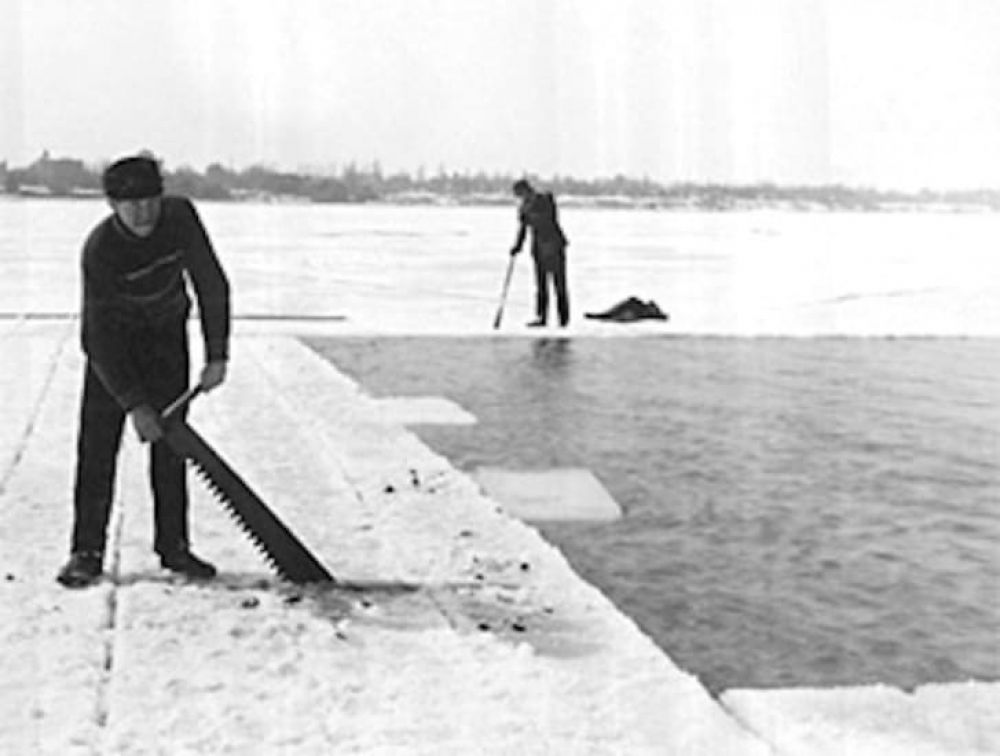Progression to the Old West: how ice became a commodity in America
Modeled after European-style large deep storage pits, early cold storage systems in America were located underground in the 17th-century. According to the Project Gutenberg eBook, there may have been a hut built over the pit to trap cold air and help preserve perishable items like meat, packed in ice and straw for insulation. Pond ice was usually cut and stored in the pit in late winter. Sometimes it lasted until late summer or early autumn..
Refrigrator
In 1802, Maryland based farmer and inventor, Thomas Moore, created an “Ice Box”. Initially named the “Refrigeratory”, this was an oval tub and lid made from cedar wood. The rectangular tin box, as seen in the sketch below, allowed space for ice between it and the wood. Both were covered with cloth and rabbit skin.
He developed it to transport butter from his home in Montgomery County to Georgetown, 20 miles south at night. Due to his new invention, the night travel was not necessary anymore.
The butter stayed firm and sold for 4d to 5 1/2d per pound higher than other competitors, thus paying for the box after four trips. He later coined the word “Refrigerator” to describe the appliance he patented in 1803, whose fan included President Thomas Jefferson.
The birth of mechanical ice: how ice was produced artificially
In 1847, Dr John Gorrie a physician scientist and humanitarian based in muggy port town of Apalachicola, Florida, sought to improve the survival rate of his malaria and yellow fever patients by cooling them down. He suspended pans of cold-water high in their sickrooms, so the cooled, heavy air would flow downward. But ice was expensive to purchase in Florida during summer, so he was motivated to build a machine that made it mechanically. Moreover, there were growing concerns over the quality and safety of the natural ice pulled from lakes and rivers. He spent more than five years experimenting, and had a prototype built in Ohio by the Cincinnati Iron Works.
Even though he received a patent for his mechanical refrigeration machine in 1851, no one took his idea seriously and he eventually failed at business. His business partner died, and he was not able to fund the idea. Moreover, Gorrie’s inefficient, leaky machines were mocked in the press by the ice-shipping establishment. He died in poverty and ill health in 1855, still in his early 50s while his ice maker concept sat on the shelf for several decades.
